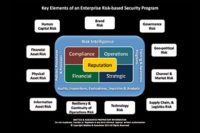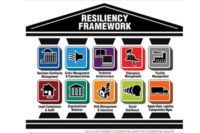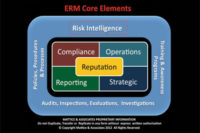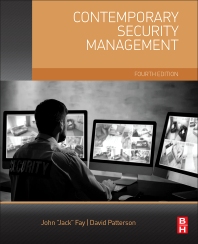Founding Security on Enterprise Risk Management

Utilizing the principles, standards and methodologies of ERM and/or ISO 31000 as the foundation of security programs is vital in order to transform your security program to holistically address the full scope of the risk, threat and hazard landscape that your organization faces today and into the future. Going forward, we will provide some insight into the concepts of ERM and why it is so important to utilize ERM as the foundation of your security program.
The Committee of Sponsoring Organizations of the Treadway Commission (COSO) established ERM as a process to deal with risks and opportunities affecting value creation or preservation and defined ERM as follows:
“Enterprise risk management is a process, effected by an entity’s board of directors, management and other personnel, applied in strategy setting and across the enterprise, designed to identify potential events that may affect the entity, and manage risk to be within its risk appetite, to provide reasonable assurance regarding the achievement of entity objectives”.
The primary driver of the establishment of ERM and eventually ISO 31000 was the deceptive and fraudulent practices of senior management at organizations like Enron and WorldCom. The goals of ERM and ISO 31000 are to enhance internal controls and processes to ensure that, from the board of directors down through the organization, an understanding is established on how to identify, analyze and manage the organization’s risk exposure, as well as the process for approval for the acceptance of risk.
The COSO framework established four key areas of risk in its ERM structure: Strategic, Operations, Reporting and Compliance. Most organizations have overlaid “Reputation” as an overarching core element of their ERM program.
• Strategic– addresses the establishment of high-level goals, aligned with and supporting an organization’s mission.
• Operations– addresses an organization’s ongoing management processes (as well as the effective and efficient use of its resources).
• Reporting– addresses the reliability and accuracy of reporting (as previously mentioned, this element of ERM is primarily focused at financial reporting and most organizations now refer to this area as Financial rather than Reporting).
• Compliance– addresses an organization’s compliance with applicable laws and regulations.
• Reputation– addresses an organization’s level of respect and credibility held by its full range of stakeholders, including: customers, channel partners, supply chain partners, employees, shareholders and the financial markets. In addition, how an organization is viewed by regulators and other bodies responsible for oversight is vital, especially when issues arise.
Another key step in establishing an ERM/ISO-based program is gaining a clear understanding of the Risk Culture of an organization. The organization may range from having a very liberal culture, to a highly entrepreneurial culture, to an extremely conservative culture, or may ultimately be a somewhat schizophrenic culture . . . not being really sure of what type of culture it wants to establish when it grows up. One thing to keep in mind is that an organization’s risk culture often changes or evolves over time. Changes to an organizations risk culture are most evident when new executive leadership is brought in from the outside.
An essential step is developing a well documented risk appetite statement that is frequently and effectively communicated across the organization. This statement defines the level of risk taking that is acceptable to the organization. The statement should also establish guidelines relative to who is empowered within the organization, from a hierarchical standpoint, to make risk decisions. This portion of the statement typically defines an approval process with escalation requirements based on the type of risk and/or the potential impact to the organization. Ensuring that you have a deep understanding of the current risk culture the organization (and/or the new risk culture that the senior leadership and the board wants to establish) is extremely important as you work to develop and define a Risk Appetite statement for the organization. Ensuring that the statement is communicated on a regular basis across the organization cannot be over-emphasized. It is vital that the risk appetite statement is thoroughly understood and complied with to ensure the success and stability of the organization.
Organizations face an ever evolving and complex risk environment in today’s global economy as well as the extreme risks that are manifested around the world from both human and natural caused events. It is imperative that security practitioners gain a deep understanding of the COSO ERM and ISO 31000 philosophies and methodologies in order to assist their organizations in dealing with the global risk environment. This article was previously published in the print magazine as "Enterprise Risk Management as a Foundation."
Looking for a reprint of this article?
From high-res PDFs to custom plaques, order your copy today!










